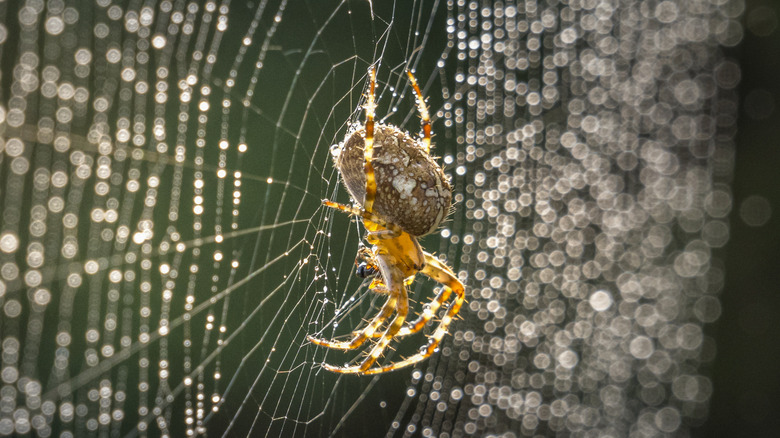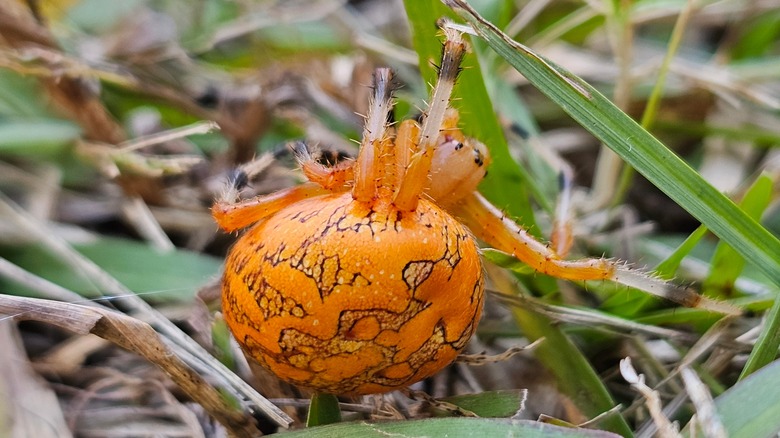What Are Those Small Orange Spiders Lurking In Your Home And Garden?
While it might be startling to walk through a web while mowing the lawn or find an arachnid wandering across your floor, spiders are beneficial to your home and garden. The trick is identifying ones that pose a threat to your safety and ones that are perfectly harmless. That can be a tough task, as there are over 46,700 different species of spider. While you might be familiar with many of the brown or black spiders you commonly see in your home, small orange varieties might catch you by surprise.
The marbled orb-weaver (Araneus marmoreus), sometimes referred to as the pumpkin spider, is the most common orange spider. The female is easily identifiable by its bulbous abdomen, which is bright orange with yellow, black, and white markings. Its legs are also orange from their base to the halfway point, and end in black and white stripes. These spiders can anywhere from 9 to 20 millimeters long (though still, that's less than 1 inch). The male shares the same leg markings, but has a darker orange body, is less bulbous, and is much smaller — between 3 and 6 millimeters. Marbled orb-weavers like the woods and prefer living near streams, making their homes in trees, shrubs, and even grass. While they're probably one of the brightest orange spiders to find, they're certainly not the only ones you might run across inside or outside your home.
More orange spiders to find
Another spider you might see is the cross orb-weaver (Araneus diadematus), which is a muted orange color with off-white markings that look like little crosses. Like the marbled orb-weaver, some people call this species a pumpkin spider, probably because the females have a big orange belly that resembles the vegetable. The females are around the same size in both species, but the male cross-orb weaver is a bit bigger than its marbled cousin — measuring between 5.5 and 13 millimeters – and is a burnt orange color with dark yellow markings on its body and striped legs.
While not entirely orange, the cardinal jumper (Phidippus cardinalis) is a hairy spider with a dark orange head and abdomen and black legs. This spider is about 10 millimeters long and has several unmistakable black eyes on the front of its head. Unlike the other two orange spiders, the cardinal jumper can — you guessed it – jump pretty far. That can be startling when you're not expecting it, but don't be alarmed. You should try to resist killing spiders in your home or outside, in fact. They can keep other pests under control in your home and garden and most, like the ones in this list, are not dangerous. It's understandable that you may want to stop spiders from building webs right outside your door, but otherwise, it's best to observe their beautiful webs and leave them alone.

